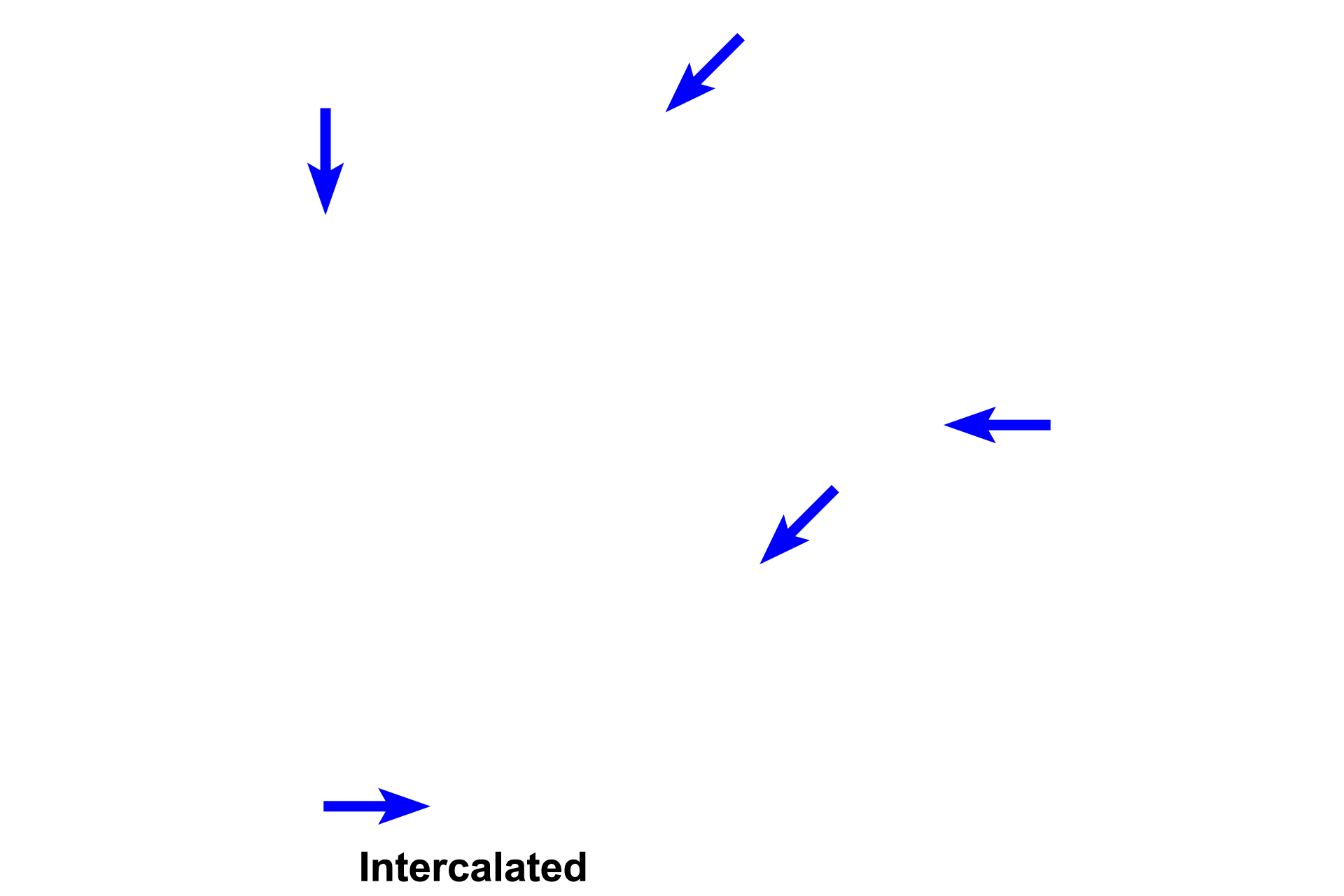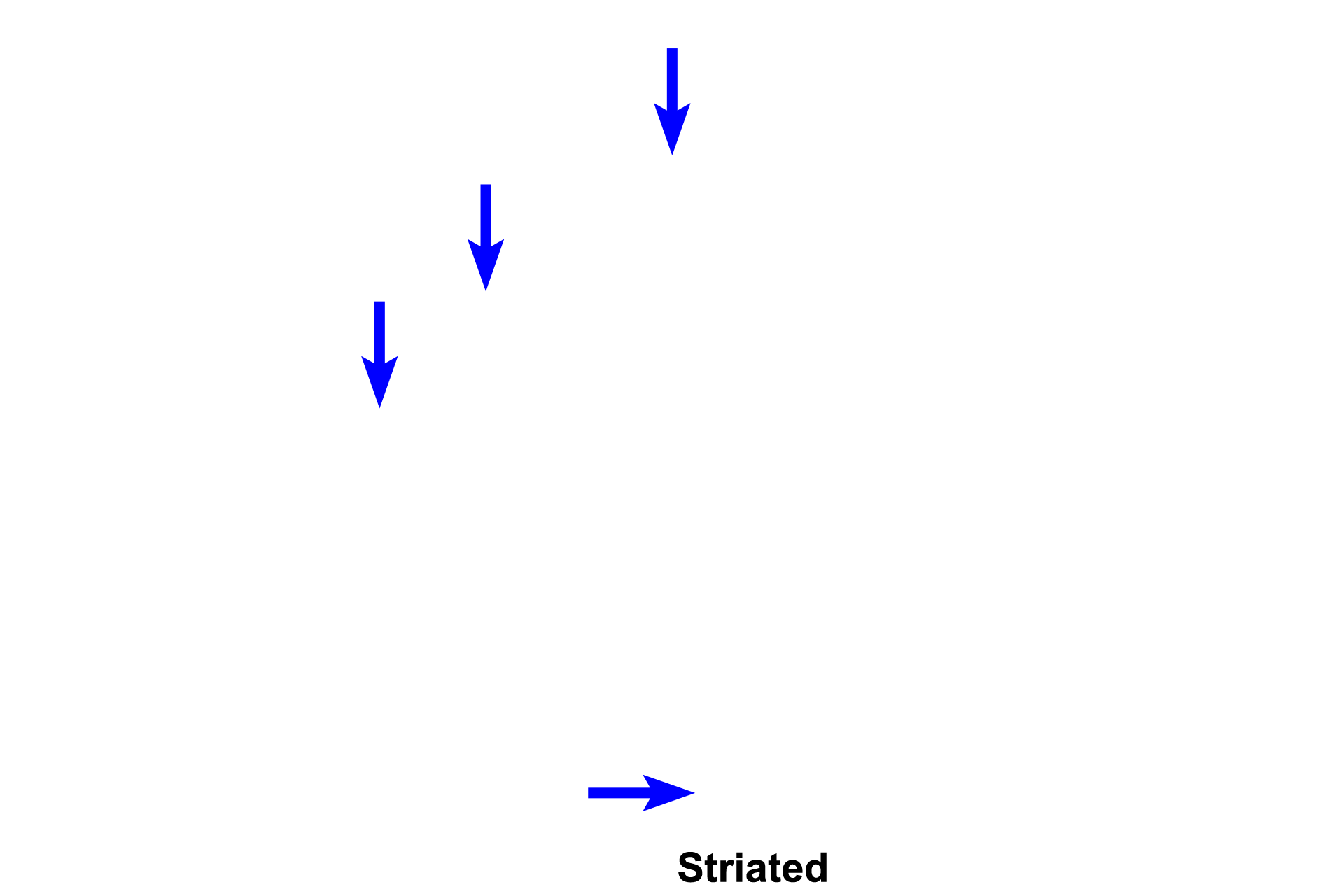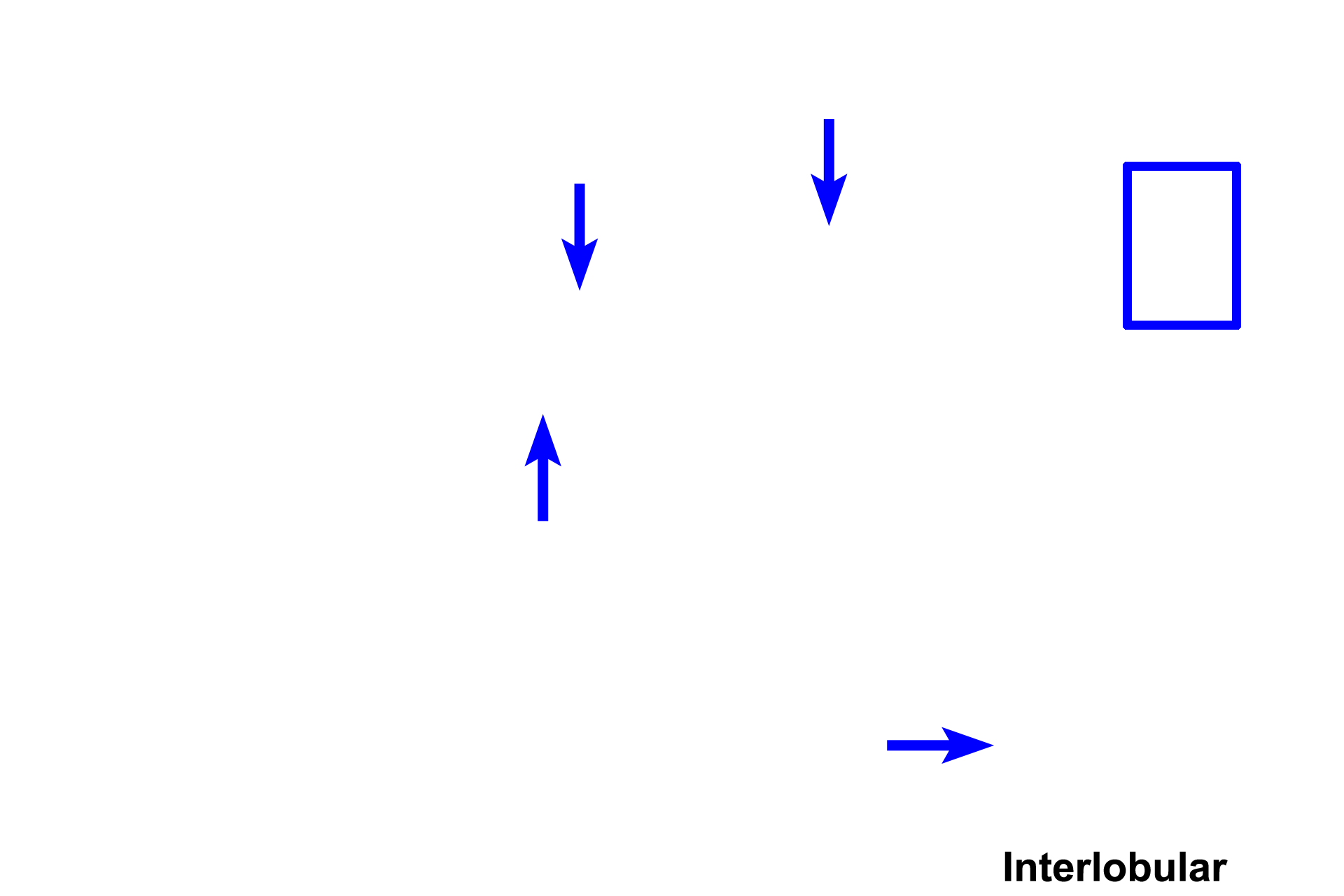
Salivary glands
The major salivary glands (parotid, submandibular, sublingual) are paired, compound glands located within or adjacent to the oral cavity. Their secretory portions are subdivided into lobules by connective tissue. A complex duct system drains each gland, carrying saliva into the oral cavity. Saliva moistens food, buffers the contents of the oral cavity, and begins the digestion of carbohydrates.

Compound acinar gland >
The three pairs of major salivary glands vary in their morphology and secretions. The parotid, the largest, is a compound acinar gland (illustrated here) with a well developed duct system. The submandibular is a compound tubuloacinar gland with serous demilunes and a less extensive duct system. The sublingual is also compound tubuloacinar with tubular secretory units predominating.

Secretory units >
Secretory units are usually acini (alveoli) (shown here), secreting a serous product, and tubules, producing mucus. In cross section, an acinus resembles a grapefruit; each segment represents a cell with basal RER and nucleus; secretory granules lie next to a small lumen. Tubules are test-tube shaped with wide lumens; cells are flattened, with peripheral nuclei and frothy cytoplasm.

Lobules >
A capsule surrounds each gland, extending interlobular, connective tissue septa into the gland, forming lobules. A lobule is a cluster of secretory units and the ducts that drain them. An intralobular duct leaves one lobule and anastomoses with ducts from adjacent lobules to form interlobular ducts. Interlobular ducts, in turn, combine to form excretory, or main, duct(s) (box at far right) of the gland.

Connective tissue septa
A capsule surrounds each gland, extending interlobular, connective tissue septa into the gland, forming lobules. A lobule is a cluster of secretory units and the ducts that drain them. An intralobular duct leaves one lobule and anastomoses with ducts from adjacent lobules to form interlobular ducts. Interlobular ducts, in turn, combine to form excretory, or main, duct(s) of the gland.

Intercalated ducts >
Intralobular ducts lie within lobules. The smallest intralobular ducts, intercalated ducts, drain secretory units and are smaller in diameter than acini. They are lined by simple cuboidal epithelium. In addition to transporting secretory product, these ducts secrete bicarbonate ions into saliva as well as absorbing chloride ions.

Striated ducts >
Intercalated ducts enlarge to form striated ducts, which are lined by simple columnar epithelium. These intralobular ducts have basal striations, resulting from infoldings of the plasma membrane with mitochondria positioned between the folds. Striated ducts regulate the electrolyte balance and, therefore, the tonicity of the saliva.

Interlobular ducts >
Interlobular ducts, lying in interlobular CT, are formed by the convergence of striated ducts after they leave the lobule. Interlobular ducts, lined by a stratified epithelium, anastomose to form the excretory, or main, duct(s) (box) that gradually assumes the characteristics of the epithelium onto which it empties. For salivary glands, this is the stratified squamous epithelium of the oral cavity.